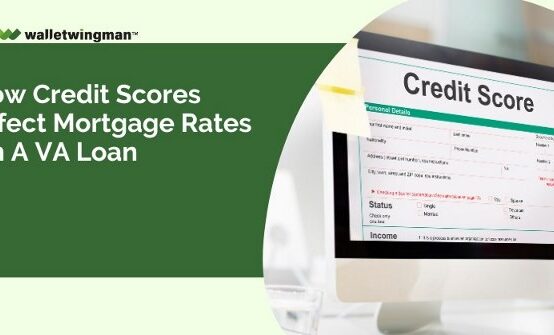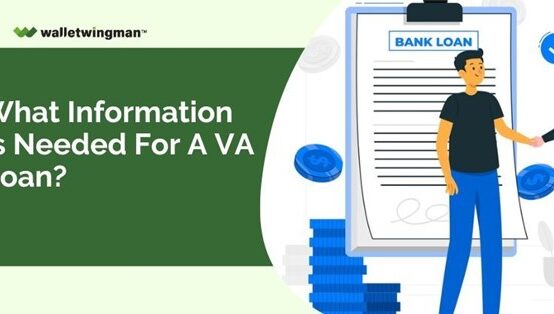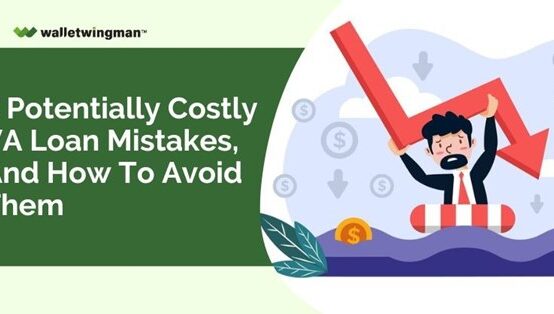The Department of Veterans Affairs publishes a policy guide called the “Pamphlet 26-7” as the official VA loan handbook for mortgage lenders. Despite its “pamphlet” name, this guide weighs over 600 pages.
However, they also publish a slimmer, 52-page handbook for home buyers. It’s called the “VA Home Loan Guaranty Buyer’s Guide,” you can find it online by searching the title.
Below, we’ve collected 10 essential quotes from the VA’s buyer guide and explained why they matter to you as a borrower.
What is a VA Loan?
A VA loan, backed by the United States Department of Veterans Affairs (VA), is a mortgage option for service members, veterans, and their families. Its advantages include no private mortgage insurance (PMI), competitive interest rates, and no down payment.
This article provides vital insights into service members’ flexibility and support, providing a more comprehensive understanding. These quotes highlight VA Loans’ benefits and unique attributes, which enable veterans to become homeowners.
Several factors assess VA loan eligibility, including military service history, credit score, and income verification. Veterans, active-duty military personnel, members of the National Guard, and reservists must fulfill specific service conditions to be eligible.
Borrowers do not obtain VA loans directly from the VA. Instead, a VA-approved mortgage lender will provide you with your loan. In addition to lenders that specialize in VA loans, other major banks also offer these loans.
1. Describing the VA Loan Guarantee

VA loans are a government-backed mortgage. Lenders offering these loans receive extra protection from the federal government through a partial guarantee.
In short, if a borrower defaults on their loan, the lender can be reimbursed for some of their losses. But this guarantee directly benefits borrowers as well.
Here’s what the VA buyer’s guide says about it:
“The VA home loan guaranty is an agreement that VA will reimburse a lender (such as banks, credit unions, mortgage companies, etc.) in the event of loss due to foreclosure. This guarantee takes the place of your down payment.”
2. Zero Down Payment Option
Elsewhere, the buyer’s guide reiterates the benefits mentioned in the previous quote:
“Remember, the VA-guaranteed home loan features a no down payment option…”
The mortgage lender will want a down payment if you purchase a home with a conventional loan. Usually, there is a minimum down payment of 3% to 5%. For a median-priced ($354,000) home in the U.S., this could add up to nearly $20,000.
However, qualifying borrowers can purchase a home without a down payment with the VA loan. As the above quote explains, the government guarantee makes this possible, which is one of the key VA loan benefits.
3. Avoiding Private Mortgage Insurance

“Not having to pay PMI could save a borrower on their monthly mortgage payment.”
This quote highlights another significant VA home loan benefits. With a regular mortgage loan, borrowers who make low down payments typically have to pay for mortgage insurance to offset the higher risk.
However, the VA loan program does not require mortgage insurance, even if you finance 100% of the home purchase price. This is a significant benefit because PMI can raise a homeowner’s monthly payments by hundreds of dollars.
4. Meeting the Lender’s Requirements
The following quote explains how borrowers also have to meet the mortgage lender’s VA loan requirements in addition to the minimum guidelines issued by the Department of Veterans Affairs.
As the buyer’s guide states:
“You must meet your lender’s minimum or standards of credit, income, and any other requirements to approve a loan. VA does NOT require a minimum credit score, but most lenders will use a credit score to help determine your interest rate and to lower risk.”
A private bank or mortgage lender will assist you in your VA loan application process. Rather than providing direct loans to customers, the VA insures the loans provided by private lenders.
5. The Mortgage Term Length
You might be surprised to learn that there is more than one type of VA loan. The Department of Veterans Affairs will guarantee a range of VA mortgage types if specific underwriting requirements are satisfied.
For example, borrowers who use VA loans can choose between a 15- or 30-year repayment period. Both choices have pros and cons.
As the home buyer’s explains:
“VA loans can be issued for 30 years or 15 years. Shorter-term loans typically have a lower interest rate and lower total cost; however, they also have higher monthly payments.”
The choice here comes down to priorities. Borrowers mainly focused on minimizing the size of their monthly payments typically choose a 30-year fixed VA loan.
On the other hand, borrowers who want to reduce their total interest costs over time might opt for the 15-year VA loan.
6. Fixed-Rate vs. Adjustable VA Loans

“VA loans can be a fixed-rate or adjustable-rate mortgage (ARM).”
As this quote indicates, borrowers can also choose between a fixed-rate and an adjustable-rate mortgage. Again, both have pros and cons.
A fixed-rate VA loan carries the same interest rate for the entire term, even if it’s for 30 years. This option provides the most stability and predictability over the long term but typically requires a higher interest rate.
An adjustable-rate mortgage (ARM) loan starts with a fixed interest rate for the first few years and adjusts annually after that. So, the rate could actually rise over time.
Some borrowers use an adjustable VA loan to secure a better interest rate for the first few years and then sell or refinance before the adjustment phase.
7. Having Enough Cash for Closing
As mentioned above, a VA loan to buy a house allows you to finance 100% of the purchase price. This removes one of the biggest obstacles to homeownership.
However, you will still need to save enough money to cover your closing costs, which can add up to thousands of dollars. Your mortgage lender must verify that you have these funds before closing.
As the VA home buyer’s guide states:
“VA requires you to have enough cash assets to cover: closing costs, pre-paid costs, or discount points which are the borrower’s responsibility and are not financed into the loan.”
In addition to closing costs, VA loans may require payment of a VA funding fee. This fee helps to mitigate taxpayers’ costs of the VA loan program. It’s important to factor in the VA funding fee when planning for the costs associated with a VA loan.
There are other terms for the VA funding fee, such as VA loan mortgage insurance or VA loan private mortgage insurance (PMI). The funding fee is the VA’s counterpart of mortgage insurance, although unlike standard mortgage insurance, it is typically a single payment.
8. Home Appraisal Requirements
A house appraisal is necessary for almost all mortgage loans to ascertain the property’s current market worth. This also applies to the VA loan program.
Mortgage lenders use appraisals to ensure they are not lending more money for a house than it’s currently worth.
When it comes to VA loans, the appraiser reviews the property along with comparable home sales in the area. He or she then issues a Notice of Value (NOV), which goes into the loan file.
As the buyer’s guide explains:
“A VA-approved appraiser will determine a reasonable value of the home. VA can then determine how much, if not all, of your loan to guarantee.”
9. The VA Loan Escape Clause

VA loans require an appraisal. We covered that above. But what happens if the appraiser determines the house is worth less than the buyer has agreed to pay?
In this scenario, a home buyer has several alternatives. They can ask the seller to decrease the purchase price, pay the difference out of their own pocket, or use their “escape clause” to back out of the deal.
All VA home loans require an escape clause. This clause allows you to exit the transaction if the appraisal exceeds the purchase price. More importantly, it protects your earnest money deposit, so you don’t lose it.
Here’s what the VA buyer’s guide says about it:
“This clause states that you have the option not to purchase a home when the appraisal’s Notice of Value (NOV) is below the sales contract price.”
10. Minimum Property Requirements
In addition to appraising the property, the appraiser must confirm that the house meets the minimum property requirements needed to qualify for a VA home loan.
These VA home loan requirements help ensure the home is safe, sound, and sanitary. They cover everything from peeling paint to holes in the wall to exposed electrical outlets.
These inspections are crucial for confirming that the home is a suitable and safe living environment for the borrower. Critical areas of VA loan inspection requirements are:
- The roof must be in good condition.
- Heating and cooling systems must be adequate and functional.
- Electrical and plumbing systems should be safe and operable.
- The home must have a clean water supply and a safe method for waste disposal.
Well-maintained homes in good overall condition typically easily meet these requirements. However, a house that needs serious repair work to be livable probably won’t qualify for the VA loan program.
Which brings us to our final quote from the buyer’s guide:
“The appraisal provides an appraiser’s opinion of value of the home and whether it meets VA’s minimum property requirements.”
Another option available with VA loans is a VA loan assumption. As long as an eligible buyer fulfills specific qualifying requirements, they can take over the remaining balance of your VA loan if you sell your house. This can be a great advantage for buyers and sellers because it can streamline the ownership transfer procedure and increase the home’s appeal to prospective purchasers.
Things to Keep in Mind for First-Time Homebuyers
Understanding the subtleties is critical for first time home buyers VA loan.
- Understand Your Financial Situation: Examine your financial situation before committing to homeownership. Consider your credit score, debt-to-income ratio, money for closing expenses, and a down payment.
- Explore Loan Options: Learn about the many kinds of VA mortgage loan, including conventional, FHA, and VA loans. Pick the best fit for your goals and financial circumstances, as each has unique requirements and benefits.
- Budget Beyond the Mortgage: Consider other expenses associated with home ownership, such as utilities, upkeep, property taxes, and homeowner’s insurance. Make sure your budget can cover these charges.
- Home Inspections and Appraisals: These are essential for ascertaining the state and worth of the property. It is advisable to anticipate such problems and take them into account while making decisions.
- Consider Future Plans: Consider your future goals. Is this a long-term investment, or will you reside in the house for several years? Your plans can influence the sort of loan and house you select.



 How to Buy a Condo Unit with a VA Mortgage Loan
How to Buy a Condo Unit with a VA Mortgage Loan  How Credit Scores Affect Mortgage Rates on a VA Loan
How Credit Scores Affect Mortgage Rates on a VA Loan  How Much Can I Borrow When Using a VA Loan to Buy a House?
How Much Can I Borrow When Using a VA Loan to Buy a House?  What Information Is Needed for a VA Loan?
What Information Is Needed for a VA Loan?  7 Potentially Costly VA Loan Mistakes, and How to Avoid Them
7 Potentially Costly VA Loan Mistakes, and How to Avoid Them  How to Avoid Mortgage Insurance By Using a VA Loan
How to Avoid Mortgage Insurance By Using a VA Loan 